
Yes are an English progressive rock band formed in London in 1968 by lead singer Jon Anderson, bassist Chris Squire, guitarist Peter Banks, keyboardist Tony Kaye, and drummer Bill Bruford. The band has undergone numerous lineup changes throughout their history, during which 20 musicians have been full-time members. Since February 2023, the band has consisted of guitarist Steve Howe, keyboardist Geoff Downes, bassist Billy Sherwood, singer Jon Davison, and drummer Jay Schellen. Yes have explored several musical styles over the years and are most notably regarded as progressive rock pioneers.

Richard Christopher Wakeman is an English keyboardist and composer best known as a member of the progressive rock band Yes across five tenures between 1971 and 2004, and for his prolific solo career. AllMusic describes Wakeman as a "classically trained keyboardist extraordinaire who plied his trade with Yes and developed his own brand of live spectacular in a solo act."

Alan White was an English drummer, best known for his almost 50-year tenure in the progressive rock band Yes. He joined Yes in 1972 as a replacement for original drummer Bill Bruford. He was the longest-serving member of the band and the only member besides original bassist Chris Squire never to leave.
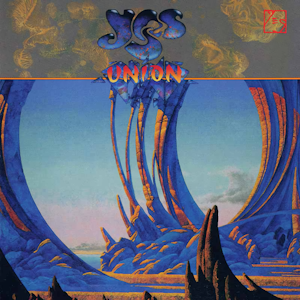
Union is the thirteenth studio album by English progressive rock band Yes, released on 30 April 1991 by Arista Records. Production began following the amalgamation of two bands that featured previous and then-current members of Yes: Anderson Bruford Wakeman Howe (ABWH), consisting of vocalist Jon Anderson, drummer Bill Bruford, keyboardist Rick Wakeman and guitarist Steve Howe, and Yes, comprised at that time of bassist and vocalist Chris Squire, guitarist and vocalist Trevor Rabin, keyboardist Tony Kaye and drummer Alan White. The eight musicians signed with Arista and a combination of unfinished tracks by both groups were selected for Union. The album's sessions were problematic from the start, including disagreements between some of the musicians regarding the "merger" of the two bands, strained relations during the recording process, and decisions by the production team of Anderson and producer Jonathan Elias to bring in session musicians to re-record parts that Wakeman and Howe had originally completed.
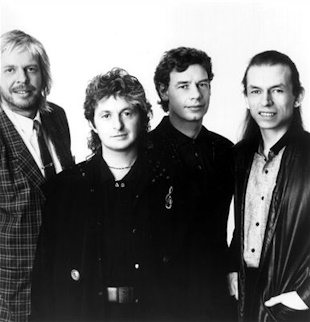
Anderson Bruford Wakeman Howe (ABWH) were an English progressive rock band active from 1988 to 1990 that comprised four past members of the English progressive rock band Yes. Singer Jon Anderson left Yes as he felt increasingly constrained by their commercial and pop-oriented direction in the 1980s. He began an album with other members from the band's 1970s era: guitarist Steve Howe, keyboardist Rick Wakeman, and drummer Bill Bruford, plus bassist Tony Levin.

Going for the One is the eighth studio album by English progressive rock band Yes, released on 15 July 1977 by Atlantic Records. After taking a break in activity in 1975 for each member to release a solo album, and their 1976 tour of the United States and Canada, the band relocated to Montreux, Switzerland to record their next studio album. During rehearsals, keyboardist Patrick Moraz left the group, which marked the return of Rick Wakeman who had left to pursue a solo career after differences surrounding Tales from Topographic Oceans (1973). In a departure from their previous albums, Going for the One, with the exception of the fifteen-minute "Awaken", features shorter and more direct songs without an overarching concept, and saw Yes record with new engineering personnel and cover artists.

Keys to Ascension 2 is the fifth live and sixteenth studio album by the English progressive rock band Yes. It was released as a double album in November 1997 by Essential Records as the successor to the previous live/studio album Keys to Ascension. After guitarist Steve Howe and keyboardist Rick Wakeman returned to the band in 1995, the group relocated to San Luis Obispo, California and started to write new material. The reunion of this particular line-up was promoted with three concerts at the city's Fremont Theater in March 1996, the five's first live performance together since 1979. Keys to Ascension 2 features the remaining half of the live set from the 1996 shows and five new studio tracks including two which marked a return to the group writing long-form pieces.
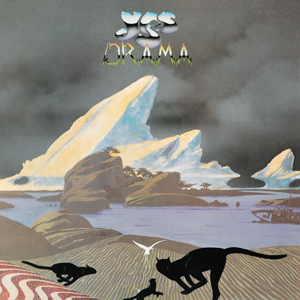
Drama is the tenth studio album by the English progressive rock band Yes, released on 18 August 1980 by Atlantic Records. It was their only album to feature Trevor Horn on lead vocals and the first with Geoff Downes on keyboards. This followed the departures of Jon Anderson and Rick Wakeman after attempts to record a new album in Paris and London had failed. Drama was recorded hurriedly with Horn and Downes, as a tour had already been booked before the change in personnel. The album marked a development in Yes' musical direction, combining the band's progressive signature with Horn and Downes' new wave sensibilities.

Tormato is the ninth studio album by English progressive rock band Yes. It was released on 22 September 1978 on Atlantic Records, and is their last album with singer Jon Anderson and keyboardist Rick Wakeman before their departure from the group in 1980. After touring their previous album Going for the One (1977), the band entered rehearsals in London to record a follow-up. The album was affected by various problems, such as internal disputes over the direction of the music and artwork, and the departure of engineer Eddy Offord early into the sessions, resulting in the group producing the album themselves.
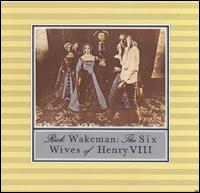
The Six Wives of Henry VIII is the second studio album by English keyboardist Rick Wakeman, released in January 1973 on A&M Records. It is an instrumental progressive rock album with its concept based on his interpretations of the musical characteristics of the wives of Henry VIII. After signing with A&M as a solo artist, Wakeman decided on the album's concept during a tour of the United States with the progressive rock band Yes. As he read a book about the subject on his travels, melodies he had written the previous year came to him and were noted down. The album was recorded throughout 1972 with musicians from Yes and The Strawbs, the group Wakeman was in prior to Yes, playing on the album.

Yesshows is the second live album by the English progressive rock band Yes. It was released in November 1980 on Atlantic Records as the final album before the group disbanded in early 1981. Their first live album in seven years, it is compiled of recordings from their 1976, 1977, and 1978 tours from dates in North America and Europe with its mixing supervised by bassist Chris Squire.
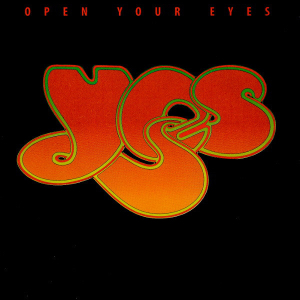
Open Your Eyes is the seventeenth studio album by the English rock band Yes, released in November 1997 by Eagle Records in the UK and by Beyond Music in the US. Following the 1996 revival of the 1970s "classic" line-up of Yes, the band's relationship with management had broken down and keyboardist Rick Wakeman had once again left the band. While various other members dispersed, guitarist, keyboardist, and producer Billy Sherwood began developing new songs with band bassist and de facto leader Chris Squire to prevent the band from losing momentum and fully splitting. Yes' new management company suggested adding a couple of songs originally written for Squire and Sherwood's other band Conspiracy to help build up material for a new Yes studio album. With the writing and production sessions dominated by Squire and Sherwood, and with singer Jon Anderson, guitarist Steve Howe and drummer Alan White only involved later in the process, the writing and creative input of the latter three members was limited.
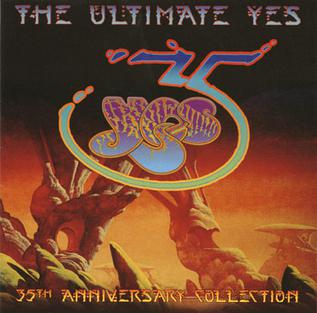
The Ultimate Yes: 35th Anniversary Collection is a compilation album by the English progressive rock band Yes. It was originally released on 2 CDs on 28 July 2003 by Warner Music in the United Kingdom. A 3 CD edition with additional material, including new recordings from October 2003, was released in the US on 27 January 2004 by Rhino Records.

1984 is a studio album by the English keyboardist Rick Wakeman, released in June 1981 on Charisma Records. After reforming his band The English Rock Ensemble in 1980 and completing a European tour, Wakeman entered a recording deal with Charisma and began preparing material for a studio album. He decided on a concept album based on the dystopian novel Nineteen Eighty-Four by George Orwell. The lyrics are by Tim Rice.
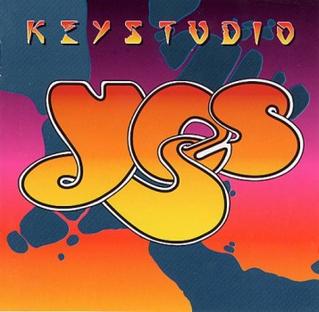
Keystudio is a compilation album by the English progressive rock band Yes, released in May 2001 by Castle Music in the United Kingdom and by Sanctuary Records in the United States. It is formed of the studio tracks previously released on live/studio albums Keys to Ascension (1996) and Keys to Ascension 2 (1997).

Essentially Yes is a box set by progressive rock band Yes. It was released in 2006 by Eagle Records. It contains five discs, four of which are previously released studio albums; Talk, Open Your Eyes, The Ladder, and Magnification. The fifth disc is a single CD version of what was later released as the 2-CD live album Live at Montreux 2003.

Live at Montreux 2003 is a 2007 live album and video from the English progressive rock band Yes. It is a live recording of the group's headlining concert at the Montreux Jazz Festival on 14 July 2003. The performance was filmed and is also available on DVD/Blu-ray.

Yes Featuring Jon Anderson, Trevor Rabin, Rick Wakeman, also known as Anderson, Rabin and Wakeman (ARW), were a progressive rock band founded by former Yes members Jon Anderson, Trevor Rabin, and Rick Wakeman (keyboards) in an offshoot of the band. The three had previously worked together in Yes for the 1991–1992 Union Tour. The trio were first announced as working together in 2010.
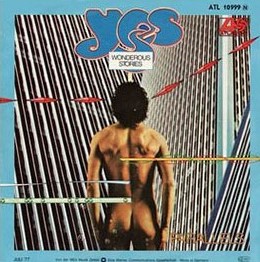
"Wonderous Stories" is a song by the English progressive rock band Yes, released in September 1977 as the first single from their eighth studio album, Going for the One. It was written by lead vocalist Jon Anderson, who gained inspiration for the song one morning during his stay in Montreux, Switzerland where the band recorded the album. The song reached number 7 on the UK Singles Chart and remains the band's highest-charting single in the country.




















